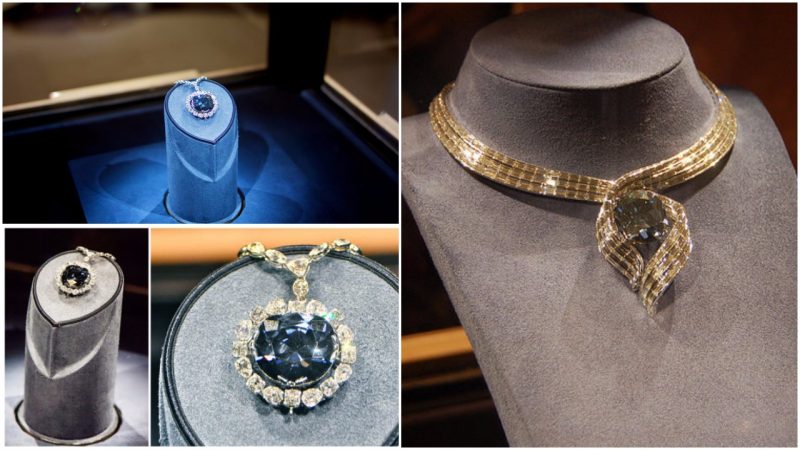When Kate Winslet starred as Rose in the 1997 film Titanic, she looked truly stunning after putting on the Heart of the Ocean Sapphire. This particular piece of jewelry powered the film’s plot as it changed hands during the night of the sinking and Jack, played by Leonardo DiCaprio, was accused of its theft by Rose’s wealthy fiance.
In the film, the characters said that the sapphire had once been a possession of Louis XVI and it was cut into the form of a heart following the French Revolution. Of course, the piece used in Titanic was only a prop, not a real diamond. The world was enthralled to see it reincarnated on the night of the 1997 Academy Awards, when actress Gloria Stuart, who played elderly Rose in the film, appeared with a real pendant of the piece. Her necklace was adorned with a hundred diamonds and a 170-carat sapphire worth $4 million.
What’s perhaps less known is that the story of the Heart of the Ocean was not added to Titanic‘s plot purely out of a writer’s imagination. First, it appears that one of the Titanic surviving passengers, Kate Florence Philips, possessed a diamond necklace as well as a sapphire. She received her treasured items as a gift from her lover, Henry Samuel Morley, and the two of them had boarded as second-class passengers on the ship of dreams.
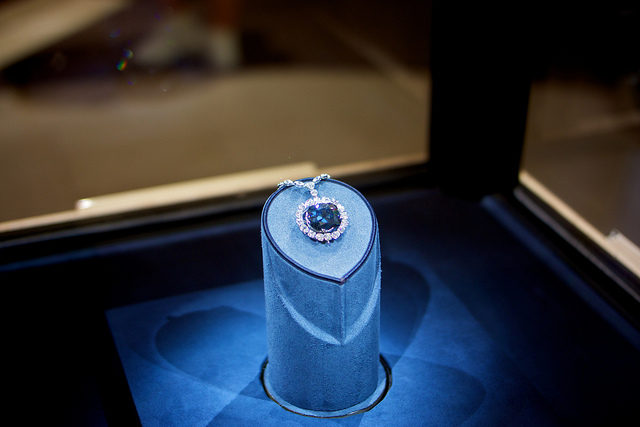
The film’s Heart of the Ocean story was also based on the lore of the Hope Diamond, a real piece of jewelry that throughout history has been notorious for carrying a curse.
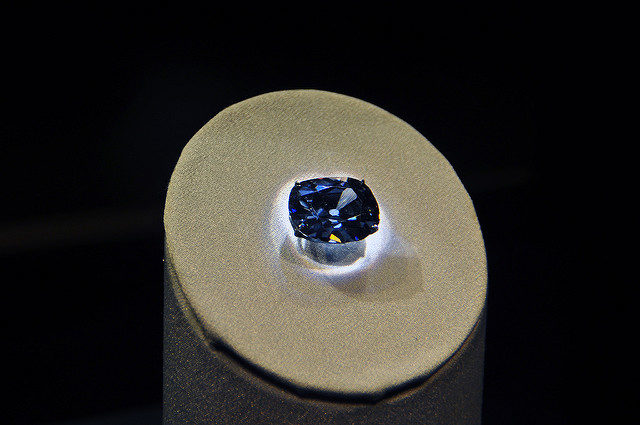
Just as the fictitious Heart of the Ocean becomes the subject of a possible robbery in the plot of the Titanic, the Hope Diamond was stolen at least twice in its long history. It began with Jean Baptiste-Tavernier, a 17th century French merchant who traded gems and may have purchased the diamond–or more likely had it stolen from a Hindu temple in India.
The story goes that once the priests of the temple discovered the robbery, they cast a curse on the diamond, that whoever happens to own it is to be ill-fated for life.
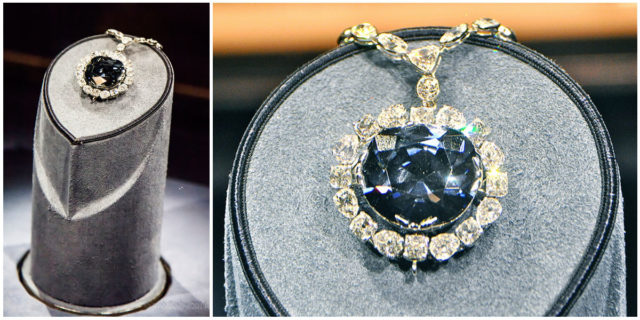
After Tavernier left India, it is known that he brought the precious gemstone to Paris along with some 20 other diamond pieces. Under his possession, the jewel became designated as the Tavernier Blue Diamond. It was the precursor stone for the Hope Diamond. Tavernier sold his diamonds to the French royal household; the king at that time was Louis XIV.
More accounts about the French merchant tell that soon after he collected and sold the gem, he surrendered to a fever and passed away. The most far-fetched story says his dead body was torn apart by wolves, though other records say he reached old age, dying at 84.
Whether the curse worked on Tavernier or it was only a pumped-up story is a subject for speculation, but the fate of many of the next diamond owners certainly is not a happy one.
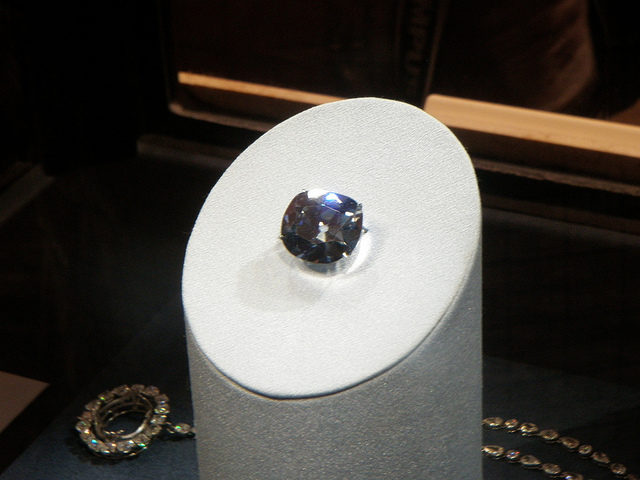
Under Louis XIV, the diamond was re-cut and listed under two new names, the Blue Diamond of the Crown of France and the French Blue. The next sad tale is of a close associate of the king, Nicholas Fouquet, who was the superintendent of the country’s finances. Shortly after he wore the diamond, it is said that the king argued with Fouquet, who subsequently spent 15 years in prison as ruled by the king’s court.
The destiny of the king himself was unfortunate as well. Throughout his lifetime he saw nearly every one of his legitimate children dying all too young, and even some of his grandchildren. His own life ended after contracting a painful disease, gangrene.
After the death of King Louis XIV, the diamond remained in possession of the French royal family and was eventually inherited by Louis XVI and his spouse, Marie Antoinette. Both were executed during France’s most turbulent political era, with some saying that their beheadings were the result of the diamond’s curse.
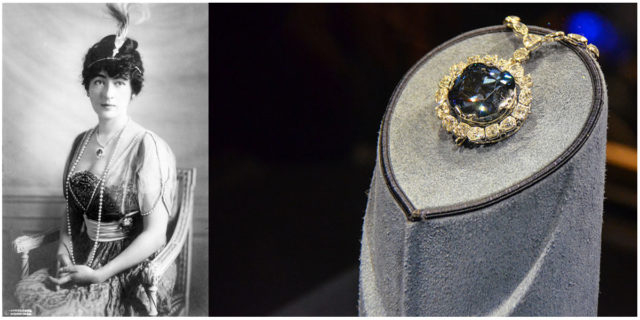
The curse of the diamond lingered in the royal household, now under control of the government, until the moment it became vulnerable again. A group of thieves broke into the Royal Storehouse and took many treasured items, including the Hope Diamond.
It is believed that one of the burglars, named Cabet Guillot, cut the diamond into two pieces as he brought it to London. The jewel was aquired by a wealthy banker, Thomas Hope, and as it ended up in the ownership of the Hope family up to the early 20th century, it earned its name.
In 1910, the exquisite piece, weighing 45.42 carats, was sold to heiress and socialite Evalyn Walsh McLean for the equivalent of $4.6 million today. She lived with her husband in Washington, D.C., and became the first person in a long time to appear in public wearing the Hope Diamond. It was said that she would attach the diamond to the collar of her dog and let the pet roam around the household.
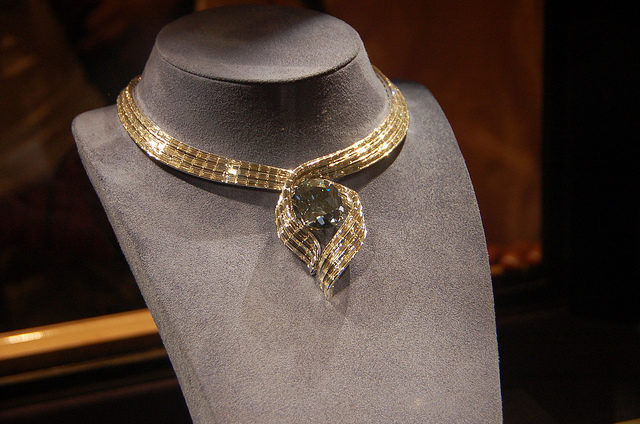
Until the moment the jewel came into the hands of Evalyn, she lived a carefree life. But trouble soon arrived. Her mother-in-law was the first to die after the diamond purchase, and then sadly her nine-year-old boy. Her husband left her for another woman, only to die in a sanatorium shortly after. Their daughter left the family further broken, losing her life to drugs at the age of 25.
After all these losses, Evelyn McLean sold the family-owned newspaper, The Washington Post. When she herself died, she left the remainder of the family in debt. From Evalyn McLean, ownership of the Hope Diamond, along with her other outstanding jewels, passed to Harry Winston in 1949. He chose to donate the famous diamond to the national gemstone collection, housed in the National Museum of Natural History.
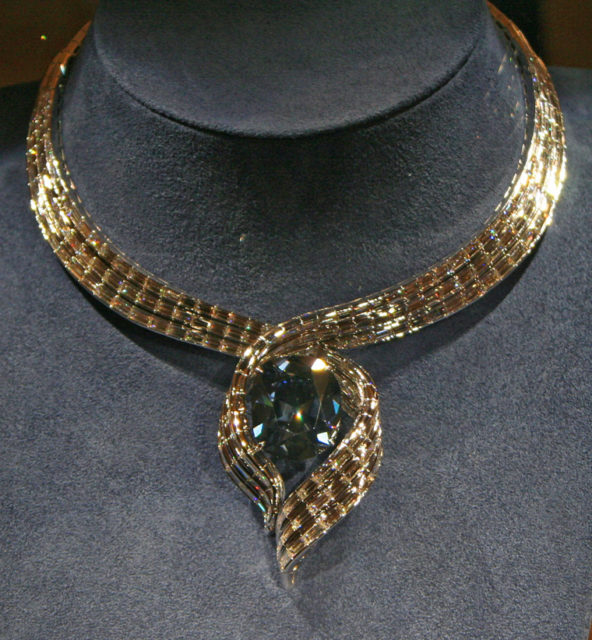
All was well with Winston, but apparently one last “victim” of the curse was James Todd, who was the unfortunate postal worker conducting the delivery of the piece to the Smithsonian Institution in 1958. Soon after Todd made this historic postage, which shockingly cost only $2.44 and $155 in insurance, he suffered a serious truck accident. Not to mention, his house was destroyed in a fire.
Since the Hope Diamond, now valued at $250 million, has been safely stored inside the Smithsonian, it has surely not caused even a fly to get killed. But it remains one of the most notorious diamonds of all time.
